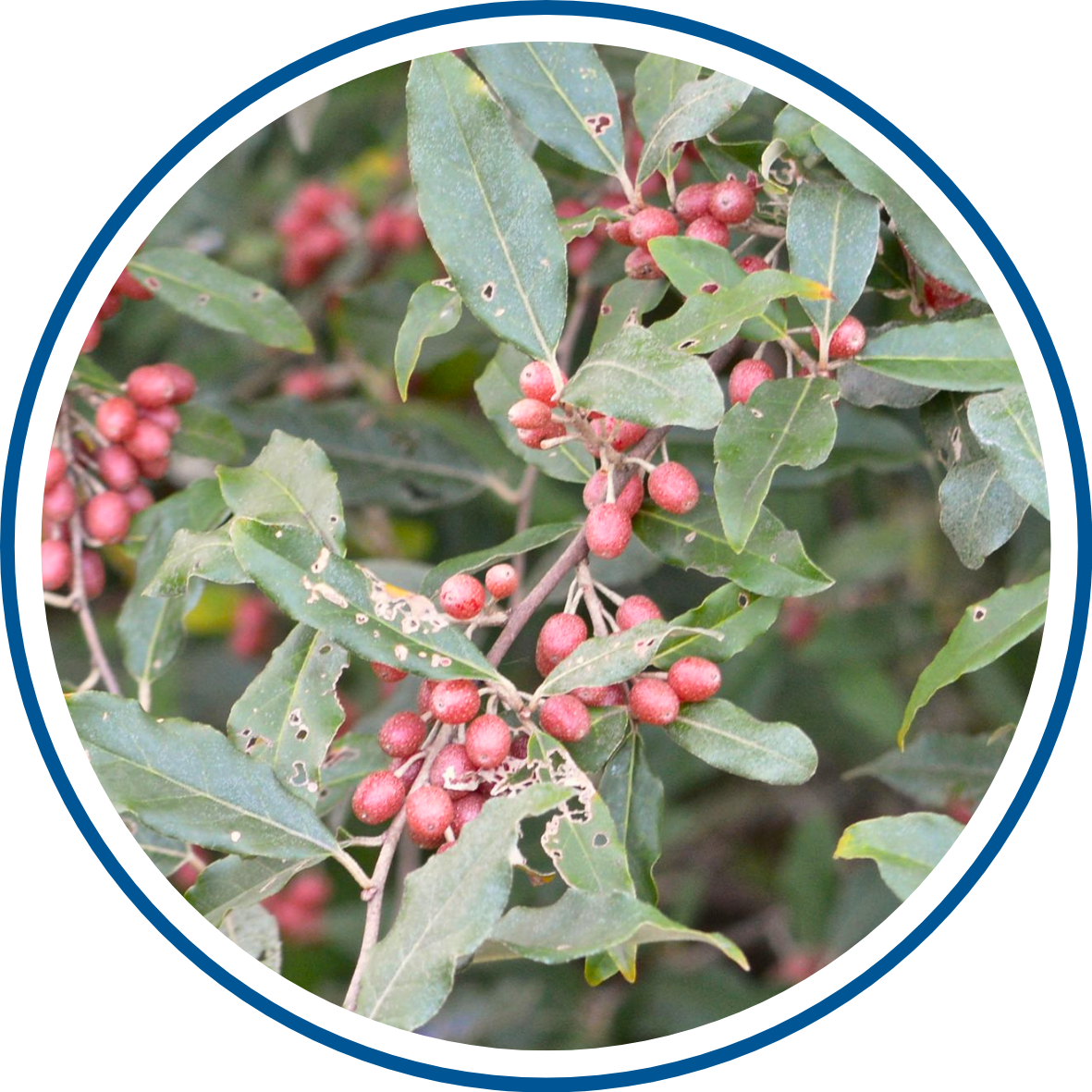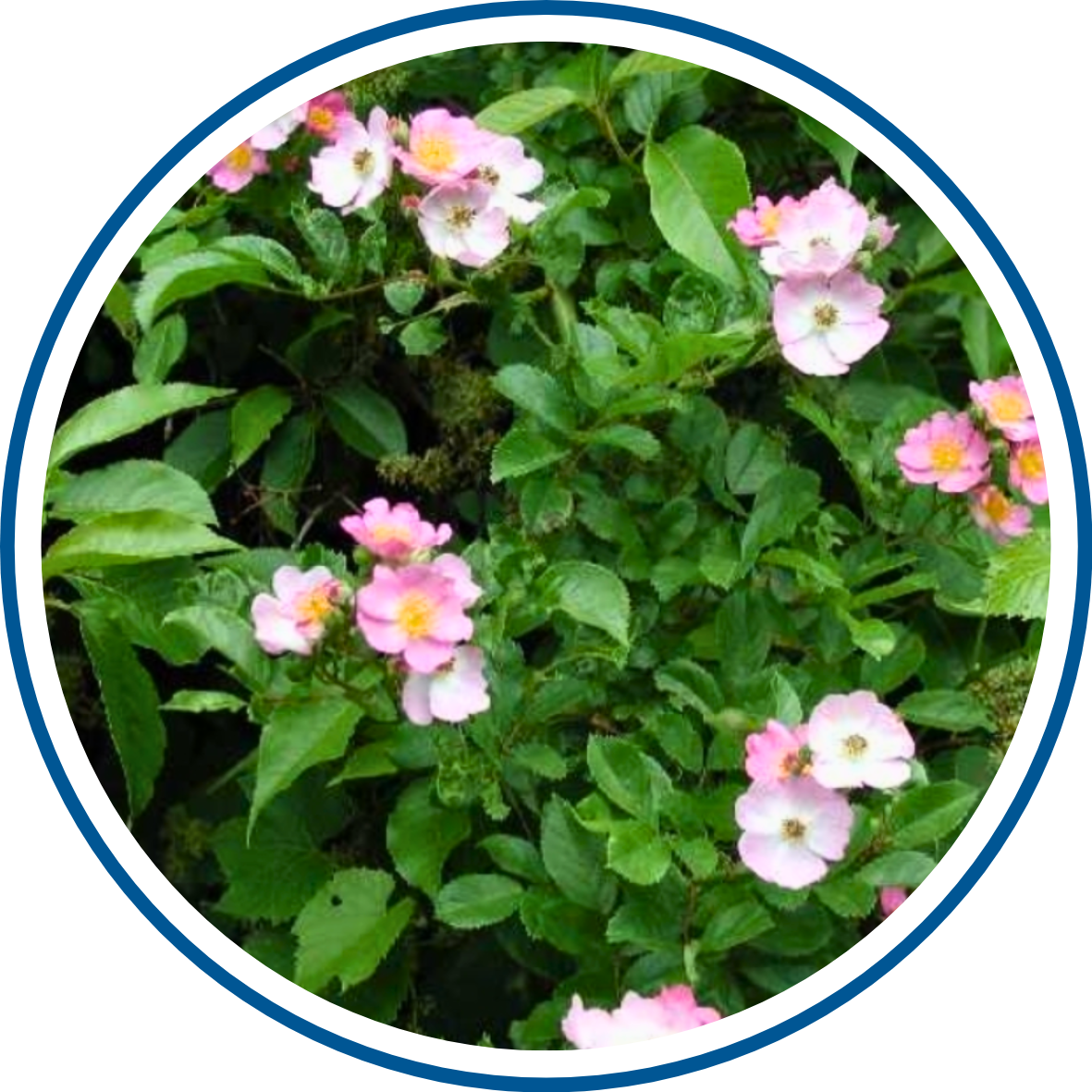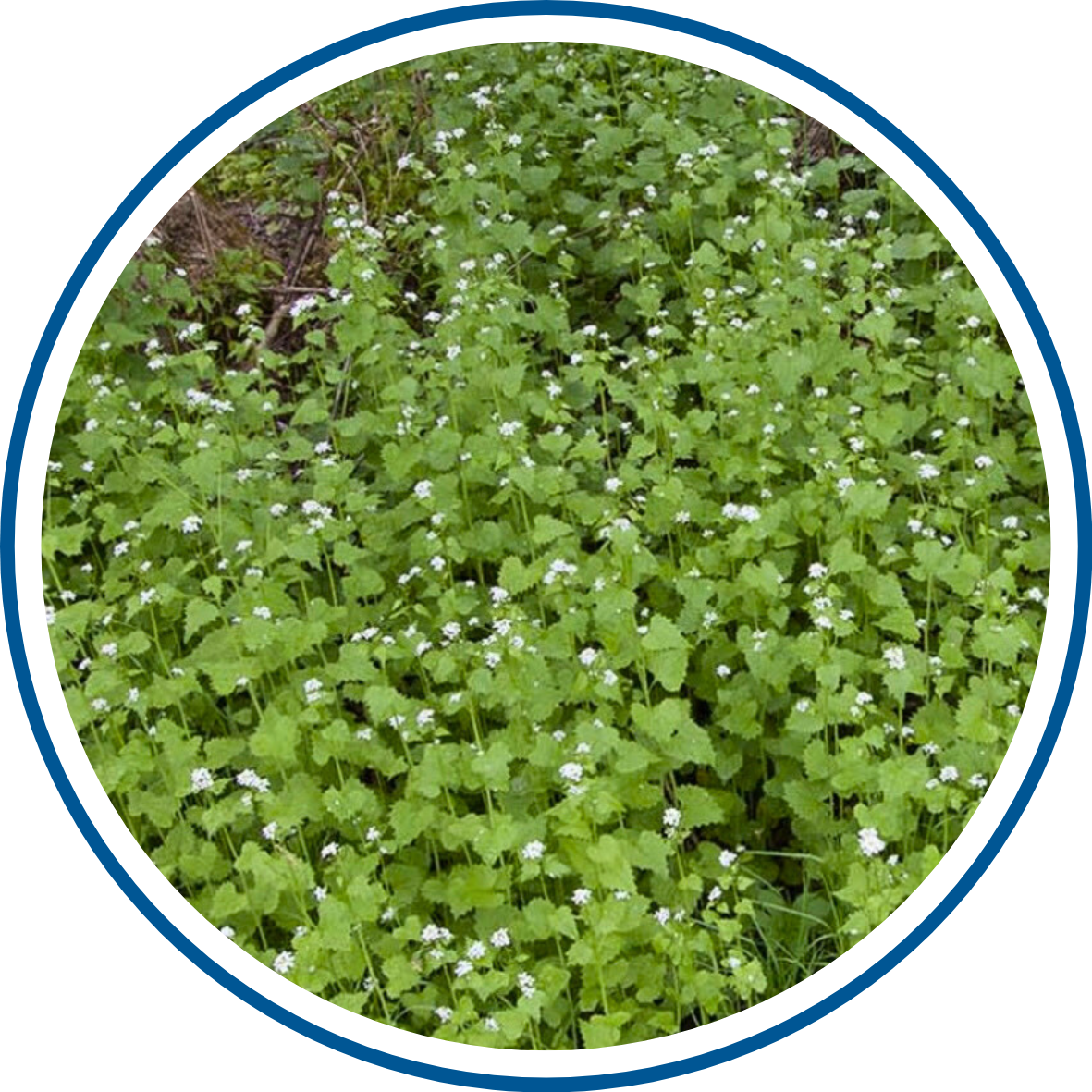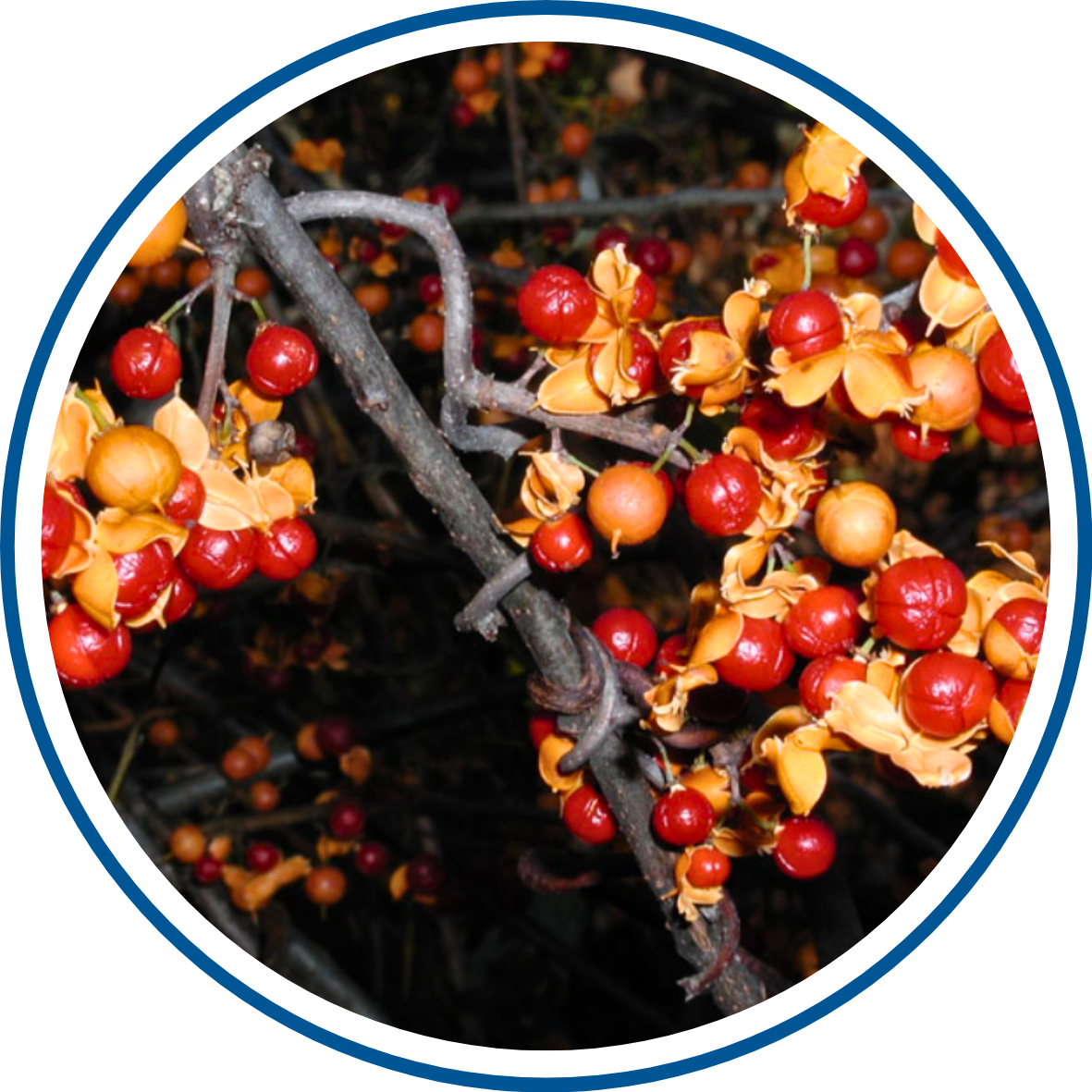Land Invasives
Terrestrial invasive species are non-native plants, animals, and other organisms that live on land rather than in water, and they can be found in a variety of land-based habitats like forests and prairies. These harmful invaders encompass a wide range of life forms, including plants such as trees, shrubs, vines, grasses, and other herbaceous plants, as well as animals like insects, mammals, reptiles, arachnids, birds, and nematodes.

Common Terrestrial Invasives In Our Watershed
Tree of Heaven
The invasive Tree of Heaven spreads fast with many seeds and thick growth, outcompeting local plants and reducing biodiversity. It also poisons the surrounding soil and hosts the invasive and damaging spotted lanternfly. To kill it, use herbicides like glyphosate or triclopyr from mid-summer to fall, be patient, and treat new shoots. Wear gloves due to potential skin irritation and allergic reactions.

Asian Honeysuckle
Lonicera var.
Invasive bush honeysuckles (Amur, Morrow, Tartarian – Lonicera spp.), introduced from Europe and Asia, quickly establish dense stands that suppress native woodland plants. Spreading through bird-dispersed seeds and sprouting, these adaptable shrubs thrive in various light conditions. Their dominance reduces native plant diversity and offers poor nutrition for migrating birds. Tartarian and Morrow honeysuckles can hybridize into another invasive form, Bella honeysuckle, making identification challenging. Control efforts typically target all non-native bush honeysuckle species as a whole.

Autumn Olive
Elaeagnus Umbellata
Autumn olive is a problem because it fruits heavily (up to 80 pounds of fruit in one season), spreads easily via birds and can thrive in poor nutrient soils. It has the capacity to adversely affect the nitrogen cycle of the native communities that may depend on infertile soils. It aggressively outcompetes local plants in open areas and regrows after cutting or burning. Its dense shade also kills sun-loving species. Treat with herbicides, if the plants are large, it’s best to cut them and then treat the stumps with triclopyr or glyphosate.

Common Buckthorn
Rhamnus cathartica
Common and glossy buckthorn (Rhamnus cathartica, R. frangula) are invasive threats to Indiana’s ecosystems, forming dense thickets that outcompete native plants in various habitats. Consequently, their sale, gifting, and transport are banned under the Indiana Terrestrial Plant Rule, and removal is recommended using chemical, mechanical, or biological control.

Multiflora Rose
Rosa Multiflora
Multiflora rose is a highly adaptable invasive plant found across the eastern U.S., including every county in Indiana. It thrives in various conditions, from dense woods to open fields. This aggressive plant forms impenetrable thickets that displace native vegetation and restrict movement for humans, livestock, and wildlife. Its dense growth can also negatively impact nesting native birds. Multiflora rose spreads rapidly due to its abundant, bird-dispersed fruits. Effective management requires a combination of control methods, with prevention being the most crucial step.

Garlic Mustard
Alliaria Petiolata
Garlic Mustard aggressively inhibits the growth of other plants, including native mycorrhizal fungi vital for nutrient absorption. Its ability to flourish in dense shade allows it to invade forest undergrowth successfully. It spreads rapidly via seeds, leading to a significant reduction in native plant diversity. In forests, it displaces native species, alters soil chemistry, and harms tree seedlings. It also negatively impacts pollinators by reducing food sources. Control methods include manual removal, prescribed burns, and herbicides.

Oriental Bittersweet
Celastrus orbiculatus
Oriental bittersweet is a rapidly spreading, deciduous vine identified by its glossy leaves, bright orange roots, and small green flowers that develop into red-orange, seed-containing fruits. Unlike its native counterpart, American bittersweet, its fruit clusters are found in the leaf axils, not just at branch tips. This invasive plant forms dense stands, strangling and weakening trees, and threatens to hybridize with and genetically eliminate native American bittersweet. Originating from Asia, it negatively impacts a wide range of ecosystems, including forests, wetlands, and farmlands.

What can be done to control invasives?
- Kosciusko Water & Woodland Invasive Partnership (KWWIP)
- DNR: Nature Preserves: Invasive Plant Species
Preventing the Spread of Invasive Species
The most effective way to combat invasive species is to prevent their introduction and spread. You can play a vital role in protecting native plants and animals by following these simple guidelines:
- Choose non-invasive plants: When gardening, ensure the plants you buy aren’t invasive. Replace any invasive plants in your yard with native or non-invasive alternatives. Don’t hesitate to ask your local nursery staff for guidance!
- Clean your gear: Before moving your boat to a new body of water, clean it thoroughly. Similarly, clean your boots before hiking in a new area to avoid spreading seeds or pathogens.
- Be a responsible traveler: “Don’t pack a pest!” Fruits, vegetables, plants, insects, and animals can carry pests or become invasive. Avoid moving firewood, clean your bags and boots after each hike, and dispose of food properly before traveling between locations.
- Never release exotic pets: Do not release aquarium fish, plants, live bait, or other exotic animals into the wild. If you’re considering an exotic pet, research its needs to ensure you can commit to its care.
- Volunteer and educate: Get involved by volunteering at local parks or wildlife areas to help remove invasive species. You can also help by educating others about the threat.
- Report invasive species
- Use the EDDMapS app to report
Photo credits:
https://extension.purdue.edu/news/county/whitley/2024/02/tree-of-heaven-not-so-heavenly.html
https://sicim.info/news/invasiveofthemonthfebruary2021
https://www.fs.usda.gov/nrs/pubs/rn/rn_nrs250.pdf
(Jan Samanek, Phytosanitary Administration, Bugwood.org)
https://www.invasive.org/browse/detail.cfm?imgnum=5274047
(Leslie J. Mehrhoff, University of Connecticut, Bugwood.org)
https://www.invasive.org/browse/detail.cfm?imgnum=2308050
(Leslie J. Mehrhoff, University of Connecticut, Bugwood.org)
